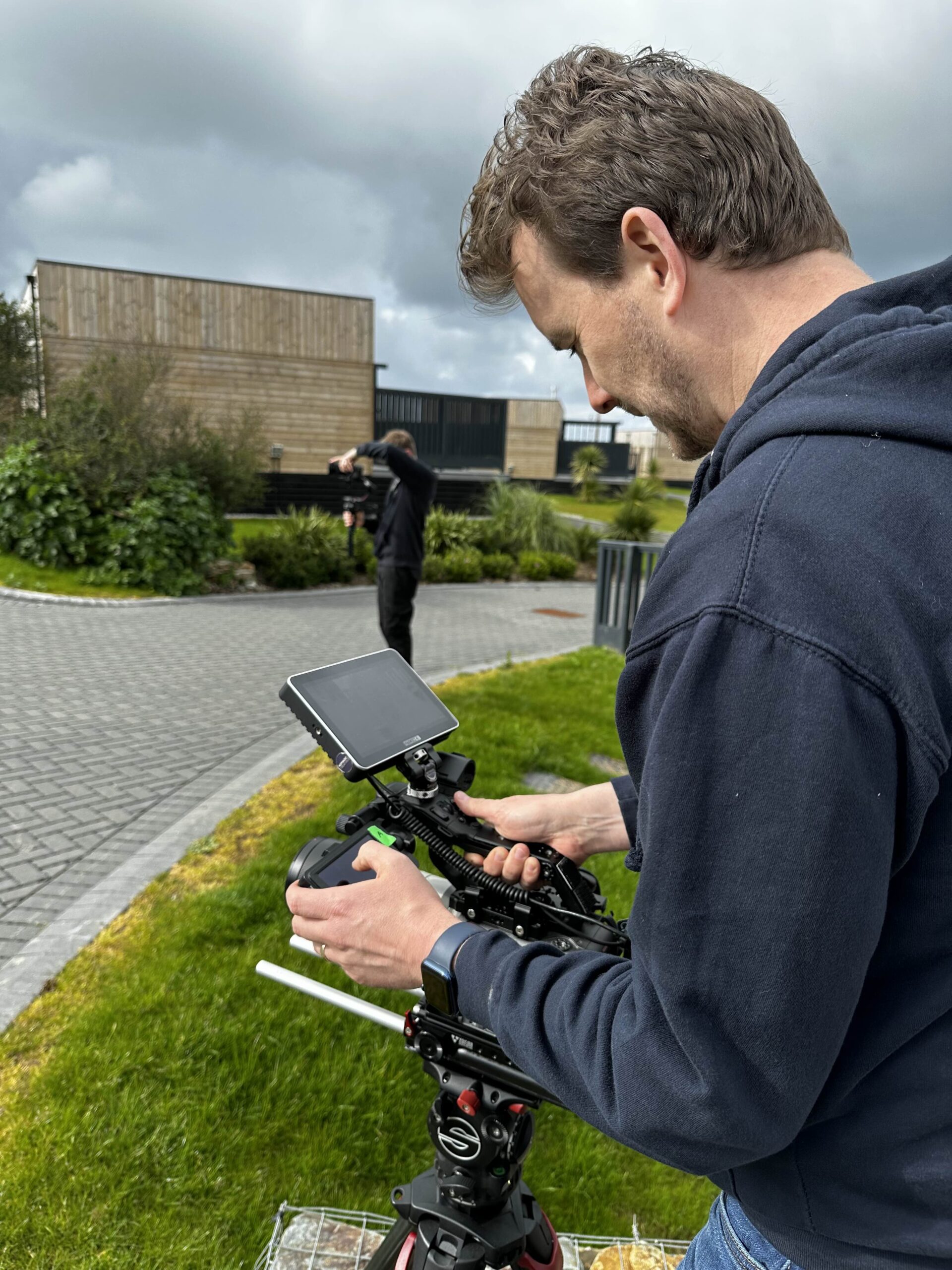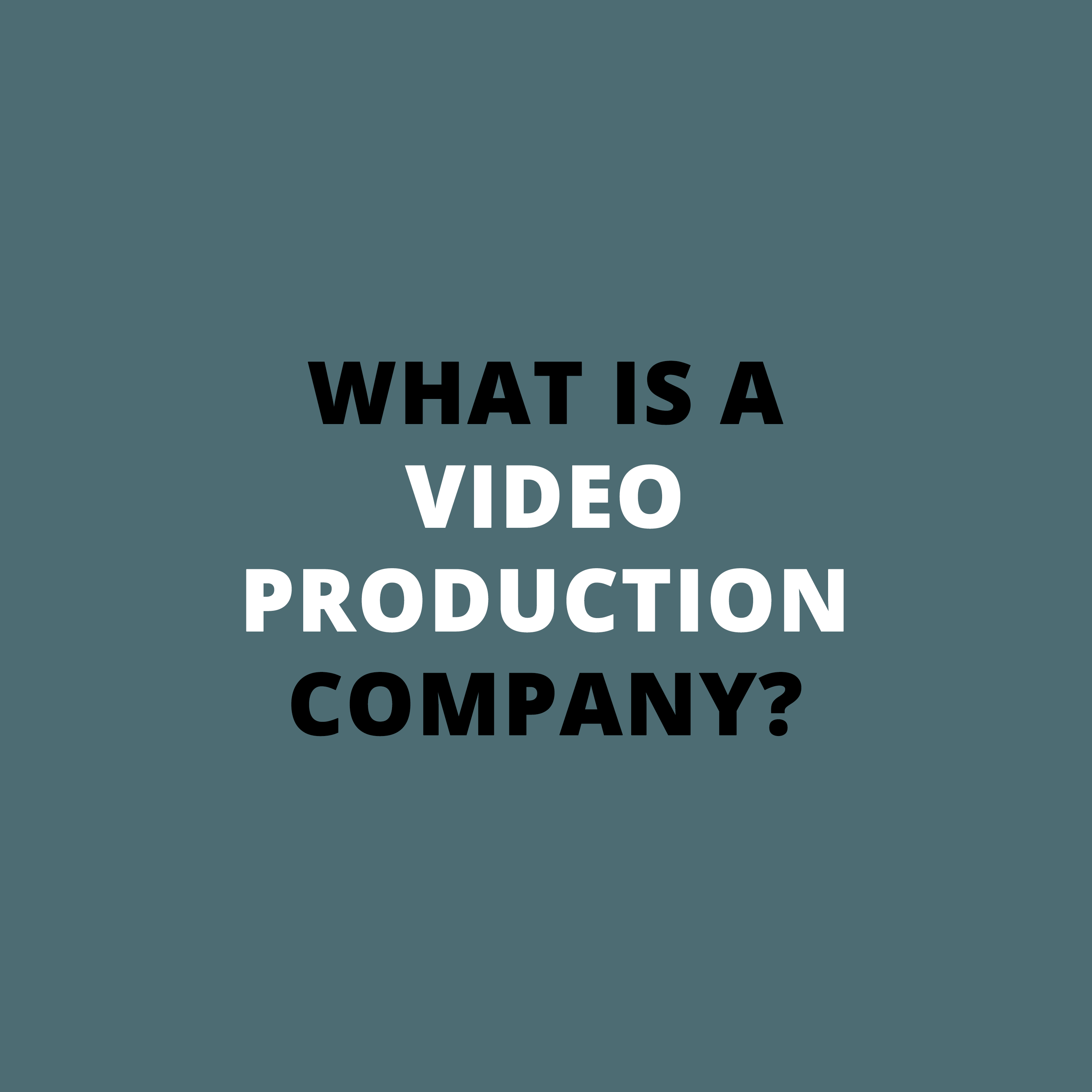If you want to know about vital post production tools, then we’ve got you covered.
The post-production team plays a crucial role in bringing the vision of a project to life. To do this, they need the right tools to make the editing process efficient and effective, maximising the impact of your video content.

Crispin editing Nomadic’s recent TV ad for Cove UK
Post-production is an important part of the filmmaking process. It’s when the footage captured is edited and polished to create a final product. The post-production team plays a vital role in bringing the vision of a project to life. To do this, they need the right tools to make editing efficient and effective. Here are our top six vital post production tools that your team should be using:
1. Vital Post Production Tools for Editing and Colour Grading Software
Non-linear editing software is the backbone of the post-production process. It’s a vital post-production tool for Nomadic UK as it allows our editors to manipulate and rearrange footage in a non-destructive way. Many different non-linear editing software options are available, including Adobe Premiere Pro, Final Cut Pro X, and Avid Media Composer.
Choose the software that best suits your needs and workflow. For example, if you do a lot of work in After Effects, you might want to edit in Premiere to keep the project within Adobe programs. Or, you might prefer editing in Final Cut Pro X and colour grading in DaVinci Resolve, so you might end up using both software platforms.
Nomadic UK recently switched to DaVinci Resolve for editing and colour grading, after years of using Final Cut Pro X. This change was due to the streamlined workflow between the editing and colour grading stages. It’s been a real game changer for our video output. The Nomads are constantly in pursuit of elevation and the move to DaVinci Resolve has pushed the quality of our work to the next step. Look at the difference between these two stills of the same image:

Before & After: We have seen a significant improvement in our colour grading results after moving from Final Cut Pro X (above) to DaVinci Resolve (below).

2. Animation and Visual Effects
One way to add an extra bit of magic to your video projects is through animation and visual effects. One of the best softwares for this is Adobe After Effects. After Effects is used for compositing video, creating visual effects and motion graphics. There is so much you can do with it from character animation to some of the visual effects in Iron Man. This software is an industry standard, so it’s a worthwhile investment.
In terms of visual effects, there are so many to choose from:
- you can add objects (real or animated) to your footage,
- remove distracting objects from footage (even pesky skin blemishes!),
- enhance natural elements,
- or add a range of additional effects like snow, rain, glow, or magic particles.
Finally, if you are filming with a green screen, After Effects makes replacing the background with anything you want so easy.
It’s a vital post-production tool for our animating department, headed up by Vlada (see her at work pictured below).
You can also create entire 2D or 3D animations from scratch in After Effects. Then you can import your compositions from Adobe Illustrator or Photoshop to easily animate them. This is great for brand films where they already have branded assets created. Text animations are also great to create within After Effects, as you have far more freedom and control than in typical editing software.

Our in-house animator Vlada working on a recent 2D character animation in After Effects.
3. Vital Post Production Tools for Storyboards and Scripts
One of the best ways to ensure that a post-production team is well-equipped for a project is by getting the pre-production right. If there is a clear vision for the project, complete with a storyboard and script, it ensures that everyone is working towards the same end goal. The production team on set will capture the footage as close to the script and storyboard as they can, and when the post-production team brings that footage into the edit, they can then craft a great finished product. When there isn’t a clear vision to begin with, it can have a knock-on effect throughout the whole process.
We’ve worked with companies like Grohanger on projects that involved taking a concept through the early stages of planning, storyboarding and scriptwriting to filming and editing the final video projects. This means that we can handle every stage of a video project.
4. Audio editing software
Sound is just as important as visuals in the filmmaking process. If you’re watching a film and the visuals look great, but you can’t hear any of the dialogue, you aren’t going to have a very pleasant viewing experience!

“Sound is 50% of the movie going experience.”
George Lucas
Audio editing software, such as Adobe Audition or Pro Tools, allow post-production teams to edit, mix, and master the sound for their projects. These tools are essential for ensuring the audio quality matches the visual quality of the footage.
The benefit of using a specific audio software is the flexibility of the tools inside of it. Using EQ, compression and automation are some of the common ways you would mix dialogue with music. It’s the glueing together of all the jigsaw pieces that makes the final product so much more immersive.This tool is essential for ensuring the audio quality matches the visual quality of the footage.
5. Vital Post-Production Tools You Can Use for Cloud Storage and Collaboration
Post-production teams often need to collaborate on projects with team members in different locations. Cloud storage and collaboration tools, such as Dropbox or Google Drive, allow teams to share files and work on projects together in real-time. These tools makes it easier for teams to work remotely and stay on the same page throughout the process.
Nomadic UK uses Vimeo, Dropbox, Google Docs and Monday.com to collaborate internally and externally. Although we appreciate that many of the companies we work with have their own preferred software for collaborating on and sharing work, so we are also able to jump onto a wide variety of different systems when the need arises. We work the way you need us to. This is why, working with Nomadic feels like we’re an extension of your team!
6. Asset management and feedback software
Post-production teams work with a lot of different files and assets: video footage, sound clips, graphics, and more. Asset management software, such as Frame.io, allow teams to organise and manage all of their assets in one place. This tool makes it easier to find and access the assets you need for your project.
As an editor, most of the time you are working to a brief. It’s a vital document that should be followed closely in order to meet your client’s expectations. Despite adhering to the brief, it’s normal for clients to have feedback. A good feedback system is an essential tool to streamline the amendments/feedback process with clients.
Sometimes, emails can be confusing, or can be interpreted in different ways. That’s why we encourage our clients to be as specific as possible with their feedback, which is made easy using online software, such as, Frame.io & Vimeo review.
These allow a client to pinpoint the exact location of the change and give easy feedback to be amended. The post-production team can even tick off each item as it’s done, and add comments, making it very clear what has been done, and noting why something might have been done differently.
Conclusion
In conclusion, post-production teams need the right tools to make the editing process efficient and effective. Non-linear editing software, colour grading software, audio editing software, cloud storage and collaboration tools, and asset management software are all essential for post-production teams.
By using these tools, Nomadic easily create high-quality video content that meets the needs of its clients, or audiences every single time.
To work with Nomadic on increasing your company’s online reach with meaningful, cinematic video content, get in touch!


